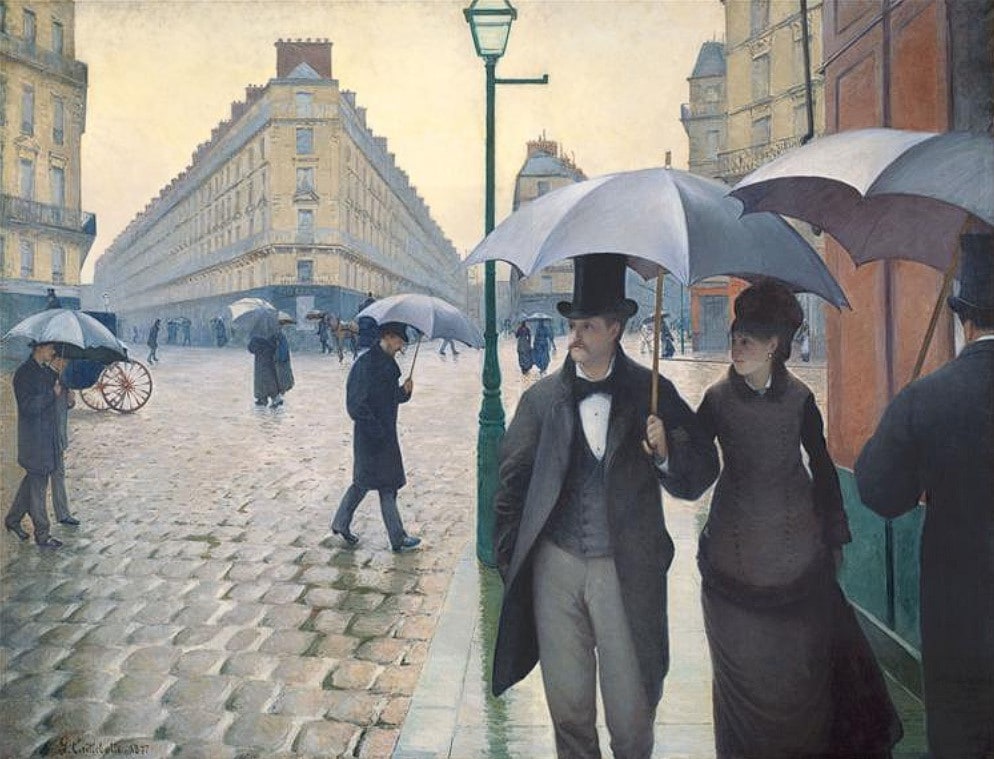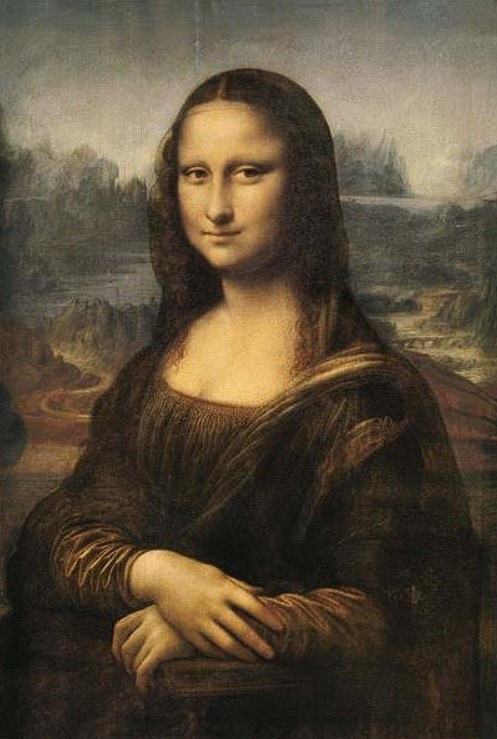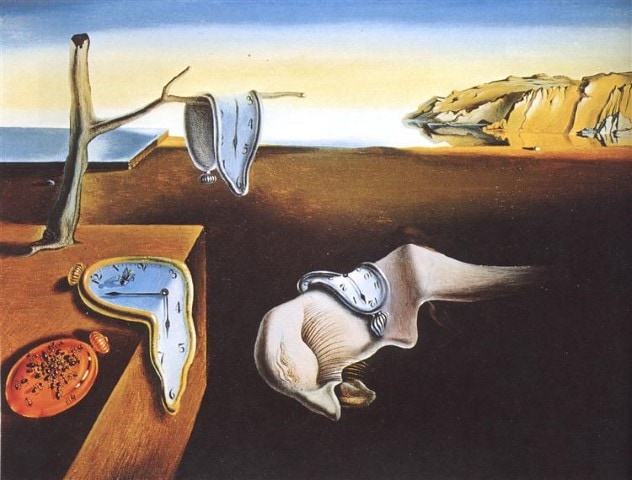Have you ever gazed at a piece of art and wondered about the invisible force that seems to guide your eyes across the canvas, creating a sense of movement and rhythm? That force is the power of line in art.
Line is not just a mark on paper. It is a dynamic element artists use to convey emotion, structure, and meaning in their work.
It can be thick or thin, straight or curved, continuous or broken.
Each type of line has its unique character and communicates a different message to the viewer.
For example, a bold, diagonal line may evoke a sense of energy and movement. While a gentle, curving line may convey a feeling of grace and elegance.
By manipulating line, artists can guide our gaze, create depth and dimension, and even evoke certain emotions within us.
So let’s go over a few examples of what line is in art, and the different types of lines you can find!
Table Of Contents
Key Takeaways
- Line is one of the foundational elements of art to create visual compositions.
- There are 5 types of Lines in Art: horizontal, vertical, diagonal, zig zag, and curved.
- Contour lines give depth and shape to a work of art.
- Gesture lines add a dynamic and expressive quality to an artist’s work.
- Implied lines are invisible pathways that add depth, movement, and cohesion to the composition.
- Shading techniques such as hatching and cross-hatching manipulate the perception of form, volume, and space.
What Is Line In Art

So, you’re probably wondering what exactly line is in the world of art, right?
Well, line is an essential element of art that serves as the foundation for creating visual compositions.
It is a mark made by a pointed tool (such as a pencil or pen) or a moving point and has the ability to convey a variety of emotions, movements, and forms.
There are different types of lines in art, such as: straight, curved, diagonal, and zigzag lines, each with its own unique characteristics and visual effects.
For example, a straight line can represent stability and order, while a curved line can suggest fluidity and grace.
Lines can be used to create various shapes, patterns, and textures. Adding depth and dimension to a piece of artwork.
So, whether it’s the bold brushstrokes of a painting or the delicate lines of a drawing, line in art plays a significant role in capturing the viewer’s attention and evoking a sense of innovation and creativity.
Types of Lines In Art
Let’s now explore the different types of line in art.
These include horizontal lines, vertical lines, diagonal lines, zigzag lines, and curved lines.
By understanding the characteristics and effects of each type of line, you’ll gain a deeper appreciation for how artists use them.
Let’s check the different lines you can use.
Horizontal Lines
Horizontal lines in art add a sense of calm and stability, making the viewer feel a sense of tranquility.
They are often associated with a feeling of rest and peace.
When used in a composition, horizontal lines can create a sense of balance and equilibrium. They can also be used to suggest a horizon line, giving the impression of distance and depth.

Examples of horizontal lines in art can be seen in landscape paintings, where they are used to depict the horizon or the calm surface of a body of water.
Another example is in architectural drawings, where horizontal lines are used to represent the foundation or base of a building.
The use of horizontal lines in art is not limited to these examples. As artists have the freedom to explore and experiment with different ways to incorporate them into their work.
Overall, horizontal lines play a crucial role in creating a sense of tranquility and stability in art compositions.
Vertical Lines
Contrasting with the calming effect of horizontal lines, vertical lines in art ignite a sense of power and upward movement, capturing the viewer’s attention.
Vertical lines are an essential art element that can significantly impact the overall composition.
These lines create a strong visual impact and often symbolize growth, progress, and authority.

When used strategically, vertical lines can create a dynamic and energetic atmosphere in a work of art. They draw the viewer’s gaze upward, creating a feeling of aspiration and ambition.
They add depth and dimension to a piece and can create a sense of balance and harmony when used in conjunction with other types of lines.
Incorporating vertical lines in art can evoke a sense of innovation. They represent a departure from the traditional horizontal and diagonal lines commonly used.
Diagonal Lines
Imagine yourself standing on a diagonal path, feeling the exhilarating energy as you move towards a new perspective and direction.
Diagonal lines, one of the fundamental elements of line in art, have the power to transform an artwork and bring a sense of dynamism and movement.

In art, the use of diagonal lines can create a sense of tension and excitement as they break away from the stability of horizontal and vertical lines.
Leading the viewer’s eye in a specific, slanted path.
Zig Zag Lines
The zig zag lines are very playful and energetic to use in your artwork! They bring a vibrant and dynamic rhythm to the composition.
These lines consist of a series of sharp angles and abrupt changes in direction, creating a sense of movement and action.

Zig zag lines can be found in various forms, such as lightning bolts, jagged edges, or even the path of a winding river. They can be used to convey a sense of energy and liveliness, making the artwork come alive.
Whether they’re used to depict the jagged edges of a mountain range or the dynamic movement of a dancer, zig zag lines can be incredibly expressive.
Depending on how they’re used, zigzag lines can evoke feelings of excitement, chaos, or even tension.
Curved Lines
The graceful and fluid movement of curved lines effortlessly guide your eye through the composition, creating a sense of elegance and tranquility.
They can be found in various forms, such as the smooth arc of a brushstroke or the flowing contours of a figure.

These lines not only add visual interest but also create a sense of movement and rhythm within the artwork.
They can also create a sense of balance and harmony, as the curved lines interact with other elements in the composition.
Additionally, curved lines can also be implied lines, suggesting movement or direction without actually being physically present.
This creates a dynamic and engaging experience for the viewer, as they are invited to interpret and engage with the artwork on a deeper level.
Using Line In Art
When using line in art, there are several key points to consider.
These will all impact the quality of your line work.
Firstly, contour lines are used to define the edges and boundaries of an object, giving it shape and form.
Gesture lines, on the other hand, are quick, expressive lines that capture the movement and energy of a subject.
Implied lines, as the name suggests, aren’t explicitly drawn but are suggested through the placement of other elements in the composition.
Finally, shading techniques such as hatching and cross-hatching create depth and texture by using lines to simulate light and shadow.
Contour
Contour lines are elegant brushstrokes that give a sense of depth and shape to a work of art.
They’re the defining lines that outline the edges and curves of an object, creating a visual representation of its form.

In line art or line drawing, contour lines play a crucial role in conveying the three-dimensional aspect of a subject.
By carefully observing the contours and translating them onto paper, artists can capture the essence of an object’s shape, bringing it to life on a two-dimensional surface.
Contour lines are not just mere outlines; they’re the backbone of a composition, providing structure and guiding the viewer’s eye through the artwork.
These lines can vary in thickness, length, and intensity, allowing the artist to emphasize certain areas and create a sense of movement or tension.
In the hands of a skilled artist, contour lines can transform a simple drawing into a captivating visual experience.
Capturing the viewer’s imagination and evoking a sense of wonder.
Gesture Lines
The use of gesture lines adds a dynamic and expressive quality to an artist’s work.
Gesture lines are spontaneous and fluid marks that capture the movement and energy of a subject. They are used to convey the overall rhythm and motion of a figure or object, allowing the viewer to sense the action and emotion in the artwork.

Artists throughout history have utilized gesture lines in their work, including the renowned Leonardo da Vinci. His drawings are known for their energetic and gestural lines, which give his figures a sense of liveliness and movement.
By incorporating gesture lines, artists are able to create a sense of immediacy and capture the essence of their subject in a way that’s both captivating and innovative.
Implied Lines
Imagine yourself standing in front of a painting, where the artist skillfully guides your eye across the canvas, leading you from one element to another with invisible pathways.
These invisible pathways are known as implied lines.
Unlike actual lines that are drawn or painted on the canvas, implied lines are not physically present but are created through the arrangement and form of the subject.
They can be formed by the direction of a figure’s gaze, the placement of objects, dotted lines, or the repetition of certain shapes.

Implied lines serve various purposes in art, adding depth, movement, and cohesion to the composition.
They create a sense of unity and flow, drawing the viewer’s attention to the focal points and creating a visual journey.
Shading (Hatching And Cross-Hatching)
Through using lines for shading, you can use hatching and cross-hatching to bring shadows and highlights to life.
Shading techniques, such as hatching and cross-hatching, allow artists to create depth and dimension on a two-dimensional surface.
The use of curved and diagonal lines in hatching adds a sense of movement and energy to the artwork, while cross-hatching creates a crisscross pattern that adds texture and complexity.

By varying the density and direction of the lines, artists can create a range of values and tones, bringing the illusion of light and shadow to the artwork.
The mastery of shading techniques is essential for creating realistic and visually captivating artworks, as it allows the artist to manipulate the perception of form, volume, and space.
Examples Of Line In Art
Let’s now go over some examples of line in art from famous artists.
“Guernica” by Pablo Picasso

In the intricate, rhythmic lines in Picasso’s ‘Guernica’ to truly appreciate the emotional impact of line in art.
In this iconic masterpiece, Picasso skillfully utilizes various techniques to convey a sense of chaos and despair. The use of thin lines throughout the painting creates a sense of fragility and vulnerability.
Mirroring the anguish experienced during the Spanish Civil War.
The outline of the figures, depicted with sharp, straight lines, adds a sense of tension and urgency.
These lines not only define the forms but also emphasize the emotional intensity of the scene, capturing the horror and devastation of war.
“Paris Street; Rainy Day” by Gustave Caillebotte

The captivating artistry of Gustave Caillebotte with his renowned painting, “Paris Street; Rainy Day.”
This masterpiece showcases Caillebotte’s skillful use of lines to depict the vibrant urban atmosphere of a rainy Parisian street.
With long, straight lines guiding the viewer’s gaze into the distance. And vertical lines creating a rhythmic composition, Caillebotte’s meticulous attention to detail brings the scene to life.
“Mona Lisa” by Leonardo da Vinci

While the Mona Lisa painting is most famous for its subject’s enigmatic smile, the use of subtle lines plays a significant role. Leonardo da Vinci’s meticulous application of fine lines contributes to the delicate rendering of the figure’s face and the overall realism of the artwork.
Furthermore, the use of subtle lines in the Mona Lisa also adds depth and dimension to the painting.
Da Vinci’s mastery in creating a sense of three-dimensionality through his fine lines can be seen in the contouring of the face, the shading of the cheeks, and the definition of the eyes and lips.
These delicate lines create the illusion of light and shadow, giving the painting a lifelike quality.
The meticulous attention to detail in the lines highlights da Vinci’s technical skill and enhances the overall beauty and complexity of the artwork.
“The Persistence Of Memory” by Salvador Dalí
(img “The Persistence of Memory” by Salvador Dalí)

This surrealist painting by Salvador Dalí features melting clocks draped over various objects.
The soft, drooping lines of the clocks create a sense of distortion and the passage of time, contributing to the dreamlike quality of the artwork.
This iconic painting is titled “The Persistence of Memory,”and it was created in 1931.
Dalí was known for exploring the subconscious mind and being fascinated with the concept of time. The melting clocks seem to be both solid and fluid simultaneously, defying the laws of physics.
This contrast between the familiar and the surreal creates a feeling of unease and invites viewers to question their perception of reality.
I hope this has helped you learn everything you needed to know about line in art! Line as an element is very interesting (but still somewhat complex) to use.
You can check the other elements of art here!
How about diving into Shape next?
Patricia Caldeira is the main writer here at Don Corgi. She's an art teacher with over 20.000 happy students across many platforms and courses!
Enjoy your stay and as always:
Keep on drawing!



